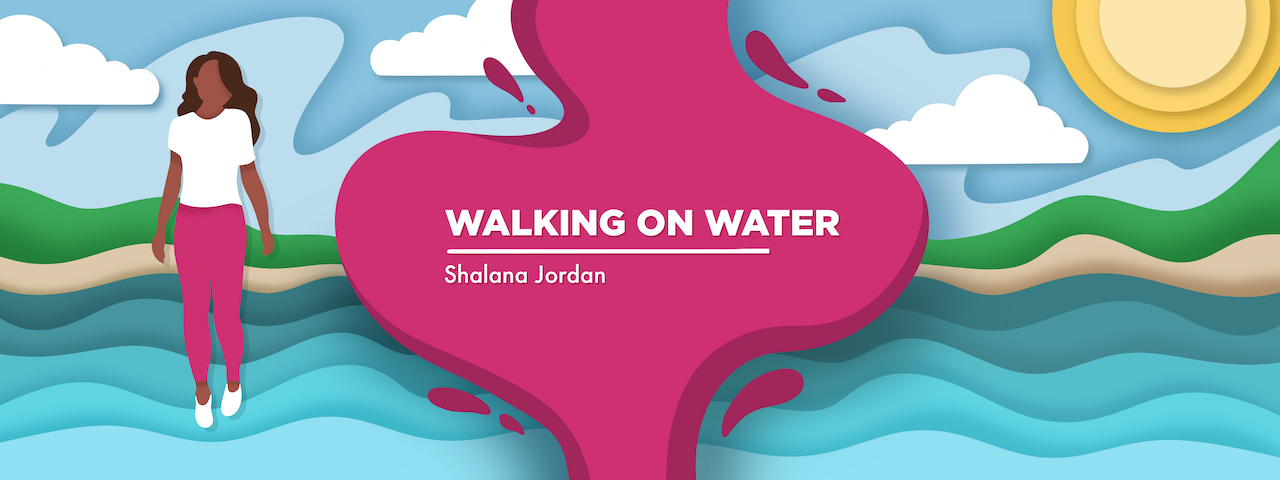How my miraculous journey with aHUS led me to find religion
Surviving a brush with death left me full of awe and gratitude
Written by |

Note: This column was updated Jan. 16, 2025, to correct that Soliris is an antibody therapy.
A few years ago, I lost my home and career, my car broke down beyond repair, and I nearly died from a rare disease. I was alone in the hospital and apart from my children for months, and the experience left me with a permanently damaged body, necessitating lifelong antibody therapy. After enduring so many bad things, one might wonder, “Why has God allowed me to suffer so much?”
Population Education reports that roughly 85% of the world’s population identifies with a religion, such as Christianity, Judaism, Islam, Hinduism, or Buddhism. People may turn to religion for faith, community, prayer, assistance, and understanding.
Many turn to religion when things are going wrong in life. When a loved one is sick, dying, injured, or in need of divine intervention, prayer can ease the mind. But when bad things happen, others may question the existence of a higher power or even lose faith. I’ve heard friends and family wonder aloud, “Why would God allow us to suffer like this?”
A walking miracle
My own journey with religion didn’t truly begin until after I nearly died in 2020 from a rare disease called atypical hemolytic uremic syndrome (aHUS). I was raised in a Baptist household and attended church occasionally as a child, but the religion never struck a chord with me. I also was exposed to Moravian and several other forms of Christianity, as well as Judaism, but I never found the right fit.
Surviving my health crisis prompted my first real faith in a higher power. I endured 18 blood transfusions, kidney function below 5%, liver failure, hypertrophic cardiomyopathy, severe edema, severe uncontrolled hypertension, hemolytic anemia, dialysis, plasmapheresis, antibody therapy, thrombocytopenia, and a ministroke — and that was just the beginning of my journey. I had become a walking miracle.
Several nurses in the intensive care unit told me they’d never seen someone receive that many blood transfusions and survive. The nurses I was closest with opened up more and more as I became a staple in the ICU. They didn’t think I would make it, yet I was the only conscious, walking, and talking patient in the unit.
When I was finally moved to a lower floor, I’d hear whispers among the staff when I walked the halls to rebuild my lost muscle mass.
“That’s the girl from the heart tower.” (The heart tower is the nickname for the hospital’s ICU.)
“I heard she had over a dozen blood transfusions.”
“She’s been here for weeks. How is she walking the halls?”
While some people might be angry with God for making them endure so much, I surprisingly wasn’t angry. Instead, I was in awe and dumbfounded. How did I survive this? Why was I spared? I was given a second chance at life. How could I not believe in miracles when I was living proof?
My second chance at life
Despite the hardships I’ve endured on this painful journey, I must admit that this experience brought me exactly to where I wanted to be. Before I got sick I was burned out and overworked. I wanted something different but had no clue how to get there.
I was at the top of my career with nowhere to climb to. I worked overtime consistently and hardly had any time with my young children. My commute to and from work had us in the car for up to three hours a day. I wanted to work less or start working from home, but somehow I just took on more and more work.
Slowing down was nowhere in sight. I didn’t slow down until it was my only option. So many people in my life prayed that I’d live and recover, and that my children would be taken care of.
People die every month from this disease. aHUS News reports that death rates among aHUS patients can be as high as 25%. We recently lost two people from my Facebook support group — people around my age who’d never been sick until their first aHUS attacks. Death was so close for me, yet I somehow avoided it.
I find myself thanking God for even the smallest things now. My heart is filled with this strange glowing gratitude that I never had before I became sick. Not only am I alive, but I now have the slower life I always wanted. I absolutely took the most arduous route to get here, but my new life is worth it. One might compare my miraculous recovery to walking on water.
Note: aHUS News is strictly a news and information website about the disease. It does not provide medical advice, diagnosis, or treatment. This content is not intended to be a substitute for professional medical advice, diagnosis, or treatment. Always seek the advice of your physician or other qualified health provider with any questions you may have regarding a medical condition. Never disregard professional medical advice or delay in seeking it because of something you have read on this website. The opinions expressed in this column are not those of aHUS News or its parent company, Bionews, and are intended to spark discussion about issues pertaining to aHUS.





Bonnie Corley
This article speaks to the power of faith. I love it!